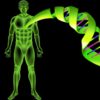Introduction Telomeres, the protective DNA–protein complexes at the end of chromosomes, are required for DNA replication and to protect chromosomes from nuclease degradation, end-to-end fusion, and the initiation of cellular senescence. Since telomeres shorten with each cell division, telomere length is a key indicator of mitotic cell aging and viability. Telomere length has emerged as […]



